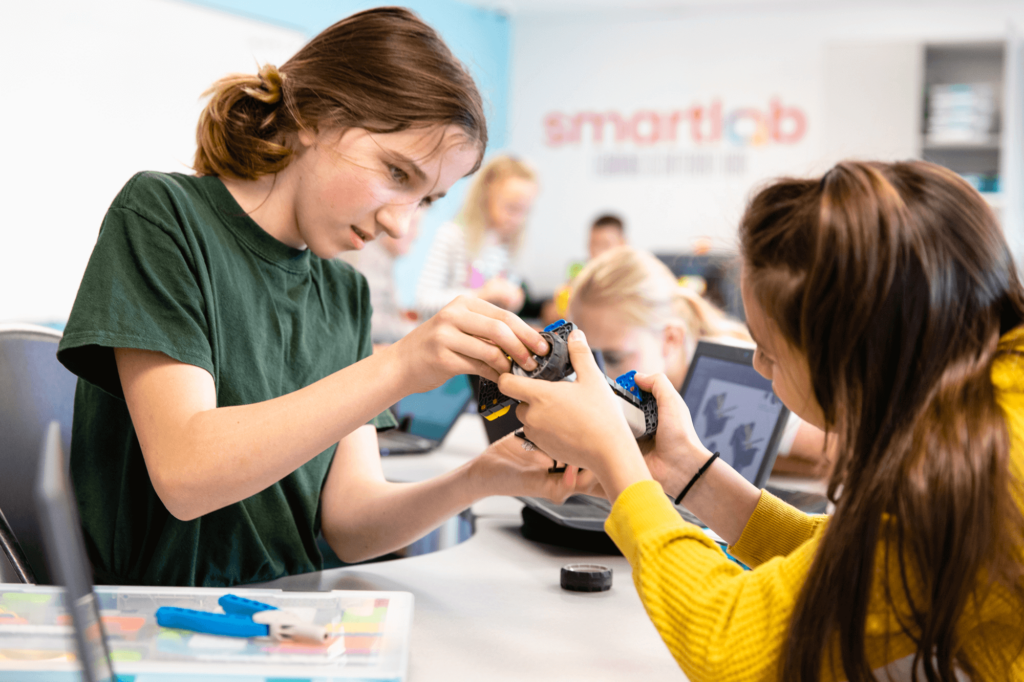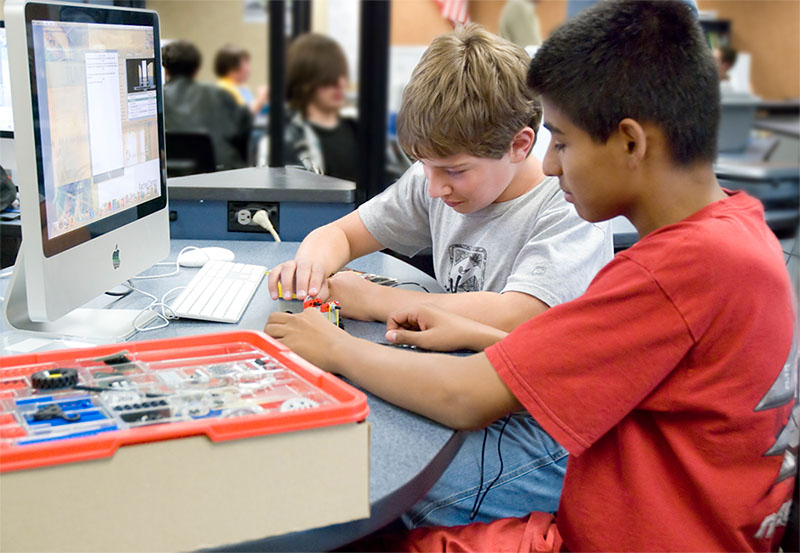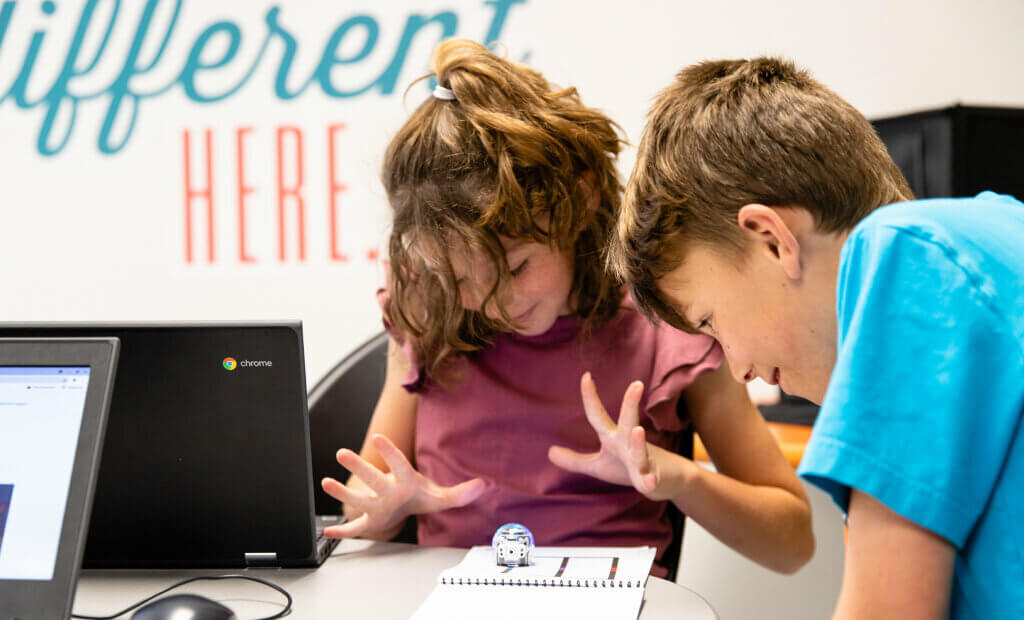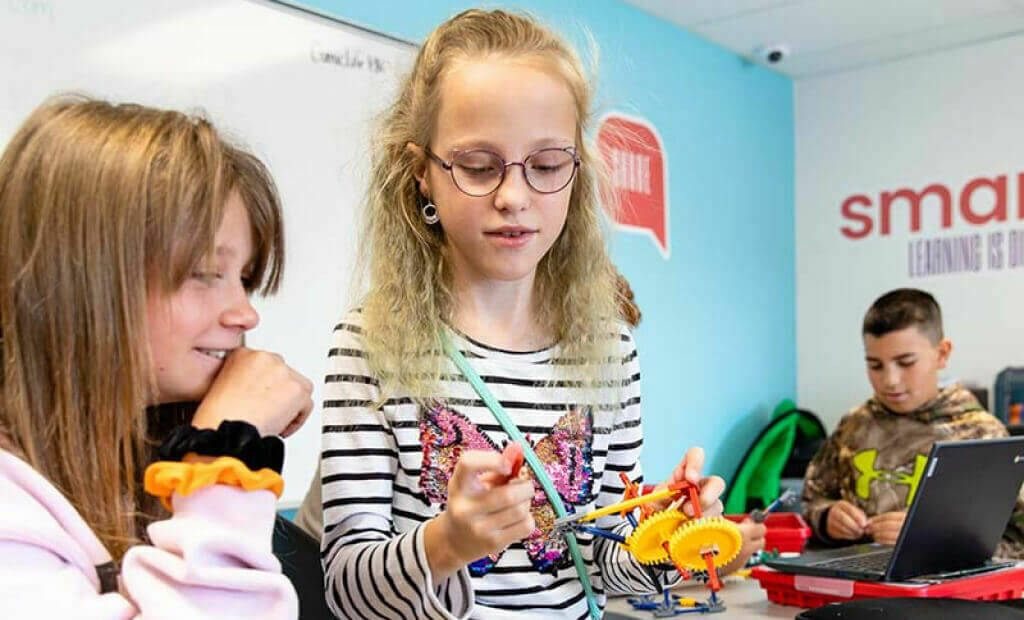9 Ways Schools Are Closing the Achievement Gap
Every student is unique, and so are the circumstances that bring them to the classroom. Differences in culture, socioeconomic status, language, gender identity, and more bring different challenges to students — both as individuals and as larger demographic groups. These challenges mean that not every student has benefited equally from access to education. The resulting gap in performance — known as the achievement gap — has resulted in a persistent disparity between different groups of students.
Identifying and overcoming these achievement gaps has been a long-standing goal of schools, educational organizations and government programs. Here’s what you need to know about the achievement gap, the different solutions different school districts have used to close their gaps and helpful strategies that any school can look to employ.
What Is the Achievement Gap?
In education, an achievement gap refers to a difference in performance between what students are expected to have learned and what they have actually learned. Specifically, when we discuss achievement gaps at a larger level, we’re addressing the differences in assessment scores between two groups of students, each defined by a particular demographic such as race, gender or socioeconomic status.
Achievement gaps don’t just exist in test scores or class performance, as a Hanover Research report notes that there are also measurable differences in achievement (highest level of education or employment) and access to opportunities. That report also notes that achievement gaps are intrinsically tied to opportunity gaps, specifically a lack of resources, support systems and role models.
Many of those inequalities are factors that schools cannot influence, such as a safe community or a neighborhood’s economic condition. As such, schools and instructors will need to look at the elements they can control and influence to increase student opportunities and help close achievement gaps.
Where Are Our Achievement Gaps?
Organizations such as the National Education Association (NEA) and programs such as the National Assessment of Educational Progress (NAEP) consider achievement gaps to exist in all measurable areas such as achievement in different subjects, on-time graduation and college readiness. Between 1970 and 1988, schools made a concerted effort to identify and address these differences and developed programs and initiatives to help close the achievement gap. These programs and initiatives ultimately cut the achievement gap between Black and White students in half, and the gap between Hispanic and White students by one-third.
However, since that time, both achievement gaps and opportunity gaps have widened. The most recent NAEP long-term trend (LTT) reading and mathematics assessments administered by the National Center for Education Statistics (NCES) showcase some widening gaps amid an overall downward trend in students’ scores since 2020. Most notably:
- Lower-performing students in mathematics experienced a greater decline in reading and mathematics scores than other students.
- While there were similar score drops for students both eligible and not eligible for the National School Lunch Programs (NSLP), the lower income students still have a 25-point gap in reading and a 34-point gap in mathematics.
- Female students experienced an 11-point score decrease In mathematics, widening the existing male−female score gap.
- A 13-point score decrease among Black students in mathematics and a 7-point score decrease in reading resulted in a widening of the White−Black score gap.
- Alaska Native / American Indian students saw the largest score decrease of 20 points in mathematics, dropping them below White students.
- Hispanic students saw a 10-point decrease in mathematics, further widening the White-Hispanic gap.
It’s important to remember that race, gender, income and performance aren’t the only student groups with measurable achievement gaps. Students with disabilities, English language learners and LGBTQ+ students are all groups that experience lower levels of performance and achievement in comparison to other groups.
However, there is continued hope for closing the achievement gap in education. Overall, data culled from the NAEP’s Nation’s Report Card points to a narrowing of the achievement gap for Black and Hispanic students. For example:
- Black and Hispanic students are three years ahead in math skills compared to the previous generation.
- Black and Hispanic students are two to three years ahead in reading skills compared to the previous generation.
- Black and Hispanic NAEP scores have substantially improved compared to the NAEP scores of white students.
The post-pandemic recovery in education is also ongoing, as June 2022 from NCES data saw a double-digit drop in the percentage of students behind their grade level in at least one subject. There is progress being made; the key is to look at what has succeeded across different school districts and communities.
Examples of Successful Initiatives for Closing the Achievement Gap
A 2016 NEA report — Closing Gaps, Sustaining Change — examined the results of the NEA Foundation’s Closing the Achievement Gaps initiative to review the accomplishments of different districts and to learn what made them successful and sustainable.
- In Seattle, Washington, the establishment of professional learning communities brought instructors and families together to better align curriculum and instruction across elementary, middle and high schools. Teachers reported gaining greater perspective in how to teach “the whole child” and the resulting student achievement rates surpassed state averages in reading and math.
- In five elementary schools in Springfield, Massachusetts, collaboration between union and district leaders created a strategy to improve student outcomes by giving leadership teams of teachers decision-making powers over curriculum, staffing, schedule and working conditions. The resulting enhancements in teacher collaboration and professional learning opportunities, in coordination with support by families and other community partners, led to increased test scores and reduced absenteeism and discipline issues.
- Columbus, Ohio sought to improve the relationships between schools and families as well as overall instructional quality. The district improved instructional quality through peer assistance and review (PAR) mentoring and evaluation, which resulted in more than 45 teachers applying for National Board Certification and more than 90% of the district’s teachers rated as skilled or accomplished during their annual performance reviews. To improve community outreach, instructors participated in more than 1,100 home visits during the project period.
- One school in Lee County, Florida launched a program that focused on student behavior and responsibility, including self-evaluation and goal-setting. As a result, students said they were aware of how to set and monitor personal goals and reported positive attitudes about their school. To ensure sustainability of that achievement across the district, teachers from 30 schools received extensive initial training on “purposeful student engagement,” including ongoing modeling, coaching and feedback from coaches and release-time teachers.
The main conclusion drawn from the Closing the Achievement Gaps initiative was that collaboration among districts, unions, and community partners is essential to ensure student achievement and success.
As Columbus Superintendent Dan Good was quoted in the report, “For too long, we’ve focused on the student as the unit of change, when [their challenges] are symptomatic of all of the other things that are going on in the community. These partnerships make sense because all these entities have some influence on students and their homes.”
How Do We Close the Achievement Gap?

Overcoming the systemic issues that affect different student groups requires coordination among administrators, teachers, parents, community members and students. No one strategy by itself can work as a solution for closing achievement or opportunity gaps. Instead, a combination of strategies is needed, for both in-school and out-of-school environments, depending on each student group’s needs and the available resources of the schools and district. These are the recommended strategies that schools should employ:
- Set high standards. Rather than “teaching down” to students, having high standards enables students to achieve at high levels. Schools that promote cultures of high expectations and strong teacher-student relationships tend to have the smallest gaps. High expectations actually increase students’ sense of self-efficacy and motivation, which improves achievement, aspirations and behavior. Set a rigorous curriculum that is aligned to and based on established standards, while ensuring that students have access to necessary support to succeed.
- Establish benchmarks and track progress. Make closing achievement gaps a larger priority for the school and the district by setting reasonable, but challenging, goals for student success and track their progress. Use formative assessments to determine how different students are progressing, where they’re experiencing gaps and how teachers can provide assistance. Pinpoint which students are succeeding at and where teachers should be focusing their attention. Be open and transparent with students about their progress and help them identify areas for improvement. Consider digital platforms like LearningHub to aid in authentic assessment, provide timely feedback, and monitor overall student progress.
- Offer more instructional time. Students with achievement gaps will require more instructional time to overcome those gaps. Often this will require more repetition of instruction or more focused direction in small groups. Focused instruction needs to be clear and explicit and target students’ individual needs. The district needs to determine how instructional time can be increased for different subjects during the school day as well as provide training for instructors on more efficient teaching techniques. Administrators, instructors and community members will need to collaborate to determine the best way to provide additional time — before school, after school, during weekends or over summers.
- Provide training for instructors. Achieving measurable and sustainable improvements requires a teacher development program. Schools in low-income communities may have teachers without professional training, or even a minor degree in their subject area. Developing and clearly communicating professional development training for instructors will ensure they’re supported in their roles and have the tools and knowledge to better assist struggling students. Initiating cultural competency or diversity programs can provide instructors a stronger foundation for engaging diverse student bodies.
DIY? Not only do we train every SmartLab Facilitator, they all have ongoing access to further professional development and training resources for every technology and area of exploration in their SmartLabs!
- Advocate for family involvement. Collaboration must extend outside of the school itself to the larger community and to students’ families. Greater family involvement with student education is associated with higher student achievement, increased graduation rates and positive behavior. School districts should explore establishing family centers at schools or other community locations to encourage parent involvement. See if it’s possible to offer workshops and consultations to inform parents on student progress and provide instruction and assistance on how they can help improve student performance at home.
- Use evidence-based instruction. Utilize instruction that is supported by evidence, including materials and methods that have been tested and found to be effective for large groups of diverse students. Evidence-based learning programs should include ongoing support from performance data, enabling teachers to better assess student progress and inform their instruction. Evidence-based learning techniques such as project-based learning can provide students with a deeper understanding of concepts through a self-directed, evidence-based approach.
- Motivate and engage. Convincing students they can succeed is essential for increasing student motivation and engagement with learning. Matching tasks to student interest and applying them to real-world issues makes learning more relevant and personal. Setting the right learning conditions through a careful selection of themes, use of technology and promotion of student choice can create the right balance of external and internal motivations. Embracing self-directed learning and culturally relevant pedagogy can better drive student engagement.
- Support equity and inclusion. Coursework and classroom environments thatvalue diversity and make inclusion a priority also are key for student motivation and engagement. Offer training programs to increase the cultural competency of instructors, facilitators and administrators. This ensures that educators are able to counteract any implicit bias and avoid assumptions about student performance and behavior. Diversity, equity and inclusion initiatives provide direction and assistance in learning who students really are and where their strengths lie.
While these strategies are universal, some may be more or less suited to a particular grade level, student group, or opportunity gap. Because each achievement gap differs between every setting and each relationship, it’s important to attend to the individual needs of each and every student. Providing students with programs that allow them to choose their goals and freely share their ideas can help them feel more empowered, motivated, and successful.
When that support is balanced against required norms, frameworks, and expectations, students are better able to become owners of their learning and overcome gaps. Solutions such as SmartLab promote student engagement while supporting instructors with the tools and resources so they can focus on every student.
Looking for resources to assist you with closing the achievement gap? Download our free eBooks on Increasing Student Outcomes With Project-Based Learning and Best Practices for Achieving Equity in Education.
References
The National Center for Education Statistics (NCES)
The National Assessment of Education Progress (NAEP)
Hanover Research, School-based Strategies for Narrowing the Achievement Gap




